These days, WordPress theme repositories are full of bloatware, crammed with poor code, unnecessary pre-installed plugins, and massive file sizes. Most of these themes slow your site to a crawl, and new users may not be able to identify the culprit until it’s too late. Hence, knowing how to choose a WordPress theme is critical.
But with thousands of themes out there, it’s not always straightforward. How can you know which ones are good and will frustrate your visitors with slow loading times?
There’s no hard and fast rule to finding a suitable theme, but these tips will let you know what to keep an eye out for and what to avoid.
Check Out Our Video Guide to Choosing a Fast WordPress Theme
Why Picking the Right WordPress Theme Is Important
If there’s one thing you can do for your site, you should spend time carefully picking a suitable WordPress theme.
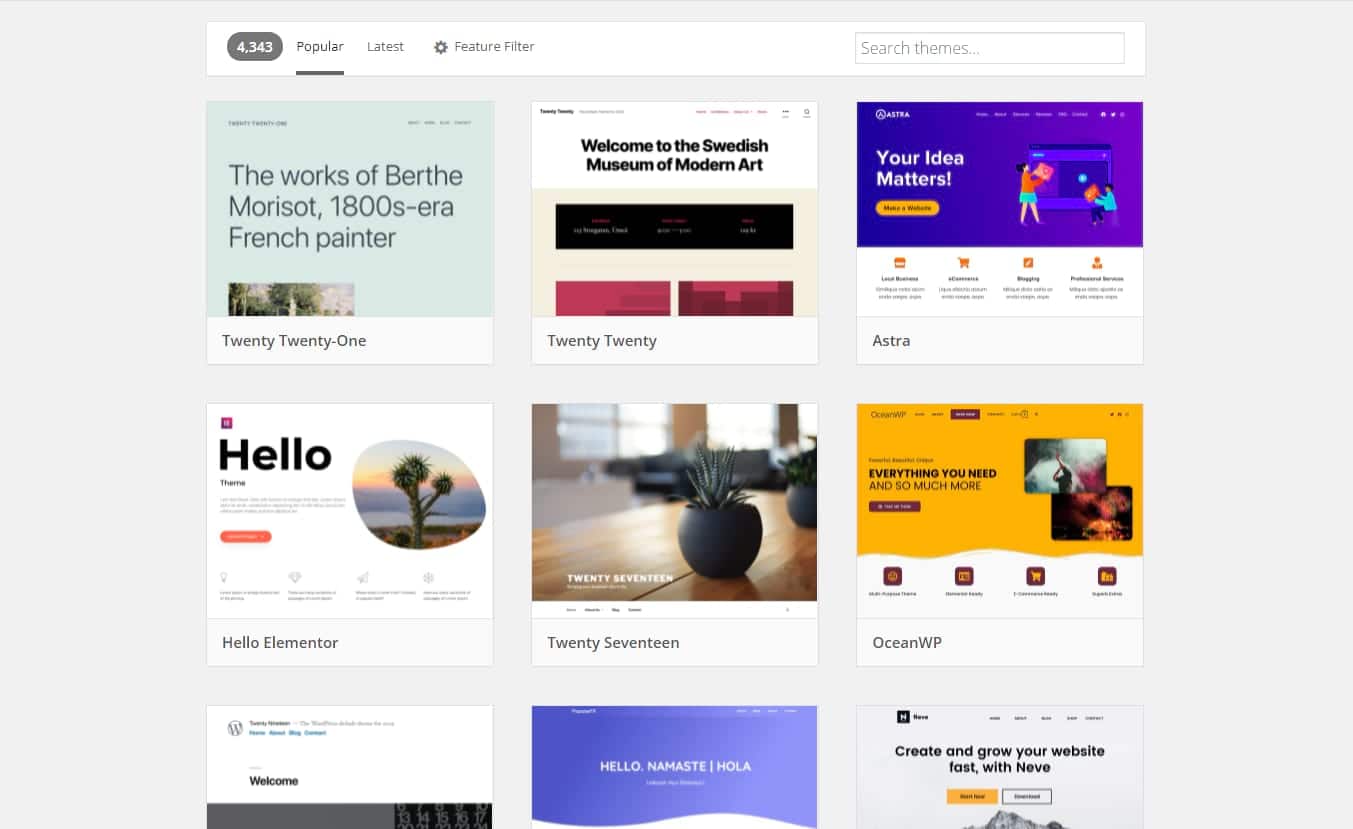
Knowing how to choose a WordPress theme is the foundation of your entire website, as the first thing your visitors will take in is your layout, navigation, color palette, font, images, and other aesthetic choices.
If you make an excellent first impression, they’re more likely to stick around to read the content. Make a bad one with poor design or prolonged page speeds, and they’ll quickly click off your site before it can even finish loading.
Think of it like decorating a physical store. A pleasant atmosphere can draw you in and keep you coming back for more. The same is true of your website’s design. A unique and well-made site can undoubtedly influence the number of repeat visitors, leads, and customers you get.
What to Consider When Selecting a WordPress Theme
When picking a theme, it can be overwhelming to narrow it down. You’ll likely end up with a dozen potential choices and no idea which one is best. Luckily, some considerations can help you eliminate most options.
Features to Look For
Every theme is different, and there are various features to pick from. Some are simply cosmetic, but others can be important for your site’s actual functionality.
We’ll go over features to look out for in-depth below, but for now, here’s a quick list of what to look out for.
- Small Size – Rather than a theme packed with features, it’s best to go with one that advertises itself as sleek and lightweight with minimal file size and few to no plugin dependencies.
- Customization – Some themes come essentially pre-made and don’t give you many options to change up the design. That means your site will look just like the thousands of others using this theme. Go with one that has plenty of customization options.
- Accessibility – It’s always a good idea to use themes that work with screen readers and are friendly to other assistive devices. It’ll help a good portion of your visitors and also help with SEO because Google gives an SEO boost to accessible websites.
- Plugin Support – Themes supporting popular must-have plugins like WooCommerce, BuddyPress, page builders, and contact form plugins (depending on your needs) are always welcome.
- Multilingual – Pick a translation-ready theme that supports non-Latin characters.
Appearance Preferences
It may go without saying, but one thing you should be asking yourself while picking a theme is what you want it to look like. Try to envision your site, make a list of cosmetic features you want, and perhaps even sketch a mockup.
If you’re not sure how to design it, take a look at similar sites. If you’re making a blog, how do your favorite blogs look? How do bloggers make their sites unique? If you’re designing a store, check out some of the popular ecommerce shops in your industry.
You may even want to do a little research and make a list of pros and cons. Take note of any clever design choices you noticed. What was best about these sites? Was there anything particularly appealing about the design or layout? Was navigating easy and painless? And was there anything you didn’t like?
Most of all, try to think about how you can add your touch to wow visitors. You don’t want to break from the mold — common industry design elements exist for a reason — but it’s a good idea to think about adding your spin to things.
Check out the Feature Filter in the WordPress theme repository. You can choose from various features like sidebar location, column, layout type, and header/footer.
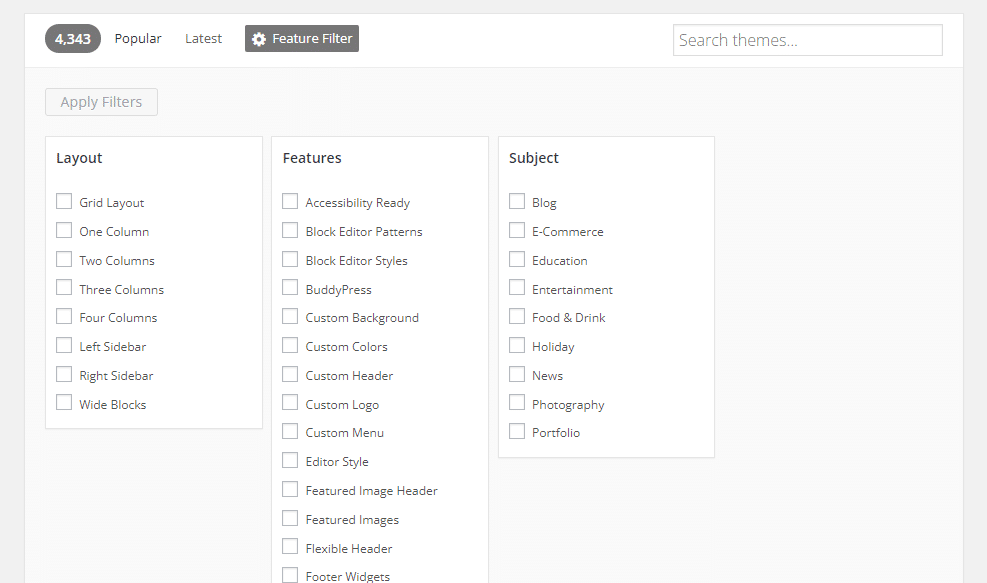
Other sites like Themeforest may not have such filters if you choose to use them instead, but this can give you an idea of what sort of general design you’re looking for.
Free vs Paid
When it comes to free and paid themes, many would say the choice is obvious if you’re building a professional site that may not be true.
Those on the side of paid WordPress themes claim that free themes have poorer quality code, less appealing designs, and are generally not trustworthy.
Premium themes are one the most significant contributors to the bloat epidemic. Paying money is no guarantee that you’re getting something sleek, professional, and coded by proficient developers.
Nothing stops any random developer with minimal experience from throwing together a theme with code copied off the internet and selling it on ThemeForest. Code quality has little to do with whether an addon is free or paid and more to do with the people who made it.
Premium software also tends to be loaded with tons of unnecessary features, leaving your site broken when you try to switch down the line.
That said, paid themes can have some upsides. If you find a professional development studio, then you may end up with a more beautiful and well-coded theme that’s worth the money. You’re also guaranteed support and updates, while free developers may not have time to continue supporting software released at no cost.
In addition, free themes are extremely popular. If you want to look a little more unique, getting a paid theme is an excellent way to do it.

But premium themes aren’t automatically better than free ones. Browse through free and paid ones, read reviews, do your research, and pick what you like best and think most suits your site.
After-Market Modification (Custom Code or Child Themes)
After you install your theme, there’s a good chance you’ll need to edit it to add in features or tweak existing ones. You don’t need to worry much if you’re using the built-in tools to swap out a color palette and upload a logo, but serious code edits have unique considerations.
In this case, you should either use a staging site or a child theme if something goes wrong.
The problem is that some themes don’t support child themes, or may even attempt to restrict customization. Ensure your theme supports code editing and child themes before you lock yourself in.
Tips for How to Choose a WordPress Theme
Need some more guidance? The ideas above can give you a general idea of what to look out for, but these tips will help you narrow things down. Here are a few key things you want in your themes.
1. Simplicity
Many themes will try to dazzle you with flashy designs and thousands of features, and it’s easy to fall for the trap. But often, the best theme is the simplest one — the one that does its job and nothing more or less.
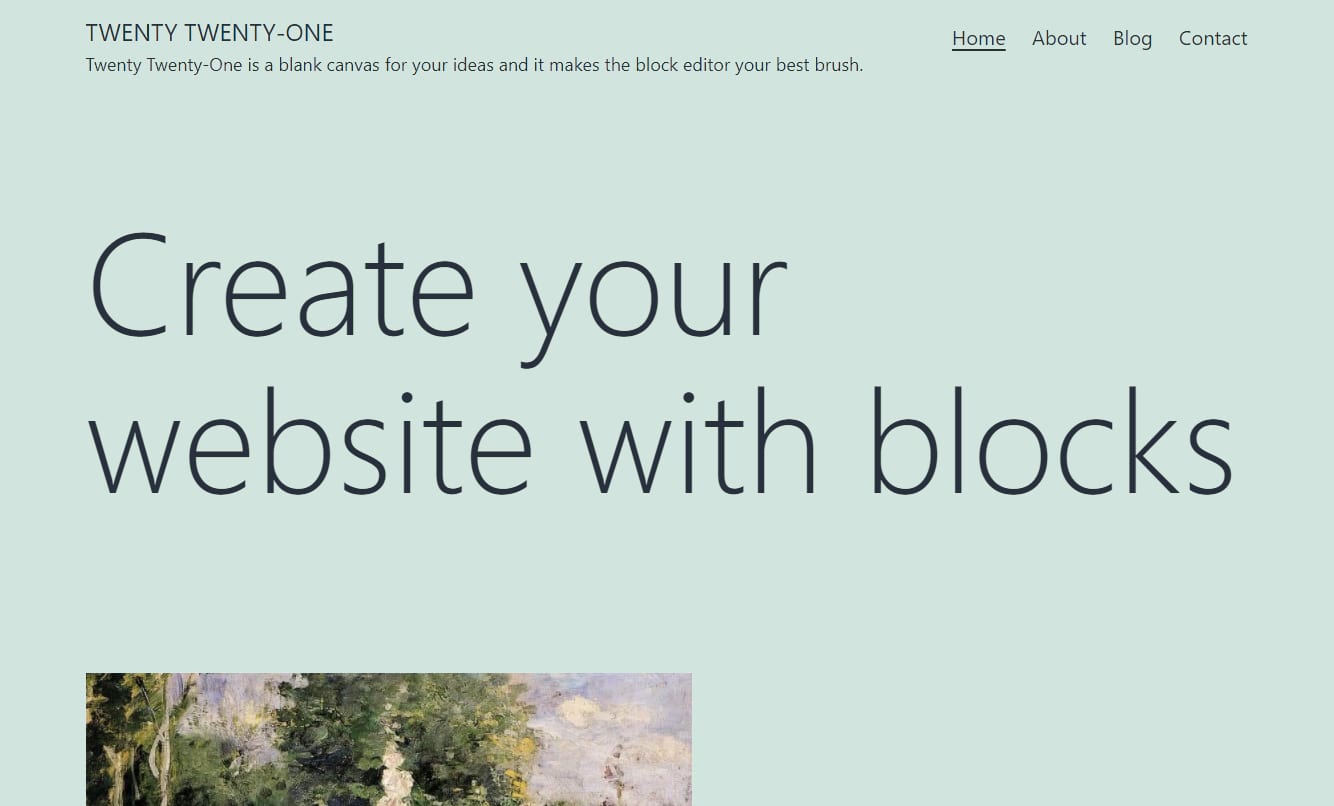
A simple look can go a long way, and for non-designers, it’s often the best choice and the one that’s easiest to work with. A pleasing layout, a few tasteful animations, plenty of customization options, and you have yourself a great theme.
It may not be the most memorable website your visitors ever see, but you also aren’t going to get a unique, knockout design with a $40 WordPress theme either way. Over-the-top designs do nothing but slow down your site and overwhelm visitors with way too much content.
The most important thing is that your site is functional, readable, and does its job, while not looking generic and bland. Pick a theme that’s beautiful but simple, with enough features to add your touch to it without going off the rails.
2. Release Frequency
You may think that it’s OK to use any theme as long as it’s well-coded and not full of obvious problems. But the truth is, a theme that was top of the line three years ago may today be full of outdated code and glaring security vulnerabilities.
The internet is ever-evolving. Every year, coding standards are updated and leave your current theme’s HTML full of conflicts. Plus, new versions of systems like PHP are released regularly. And existing vulnerabilities become apparent as hackers discover them.
That’s why it’s not a good idea to use addons that haven’t been updated in over two years. Over time, more and more bugs and security issues will become apparent, and you’ll have no support if you can’t update to the latest PHP version.
Weekly or even monthly updates aren’t necessary, but you should expect a few updates a year to fix bugs and address vulnerabilities.

It’s a good idea to look at the support forums and see if issues are being resolved to this day. If the theme hasn’t been updated in several years and the support forums are full of unresolved complaints, it’s best to move on.
3. Size
The problem with feature-packed themes is that they can instantly bloat your site and leave your load times extremely slow, and that’s all before you do any customization or install plugins.
Lightweight themes are always best. Themes below 200-600 KB can be called truly small, while anything around 2-3MB is in an acceptable range. Anything more indicates a very likely case of bloated software full of features you’ll never use.
While this isn’t a universal rule, you want your site to start as small as possible as the page size will inevitably increase as you add in content and start installing plugins.
4. Responsiveness
Every theme worth its salt will list itself as responsive. You’re likely well aware of the mobile boom; 90% of internet users browse with a mobile device. Whether that’s a phone, tablet, or smartwatch, there are a variety of different screen sizes out there.
The solution is responsive design, websites that adapt to your screen size. Before purchasing a theme, it’s worth visiting the demo page on your phone or at least resizing your browser window and seeing how it looks on smaller screens.
Images should scale properly, and the layout change without any strange effects. If a theme isn’t responsive, it’s simply not worth using.
5. Compatible Plugins
It’s rare to find a plugin and theme that don’t go together, but incompatibilities exist. Carefully read over the documentation to see if any wanted plugins don’t play well with your theme of choice.
More than that, you may want to look out for themes that integrate with certain plugins. While a theme that outright requires dozens of plugins can be a red flag, it can be a nice bonus to know that it will work well with popular caching, security, and ecommerce plugins.
6. Ratings and Reviews
It’s always a good idea to check out the ratings. Reading through reviews can give you a good insight into what most people like and dislike about the theme, and what features are most impactful.
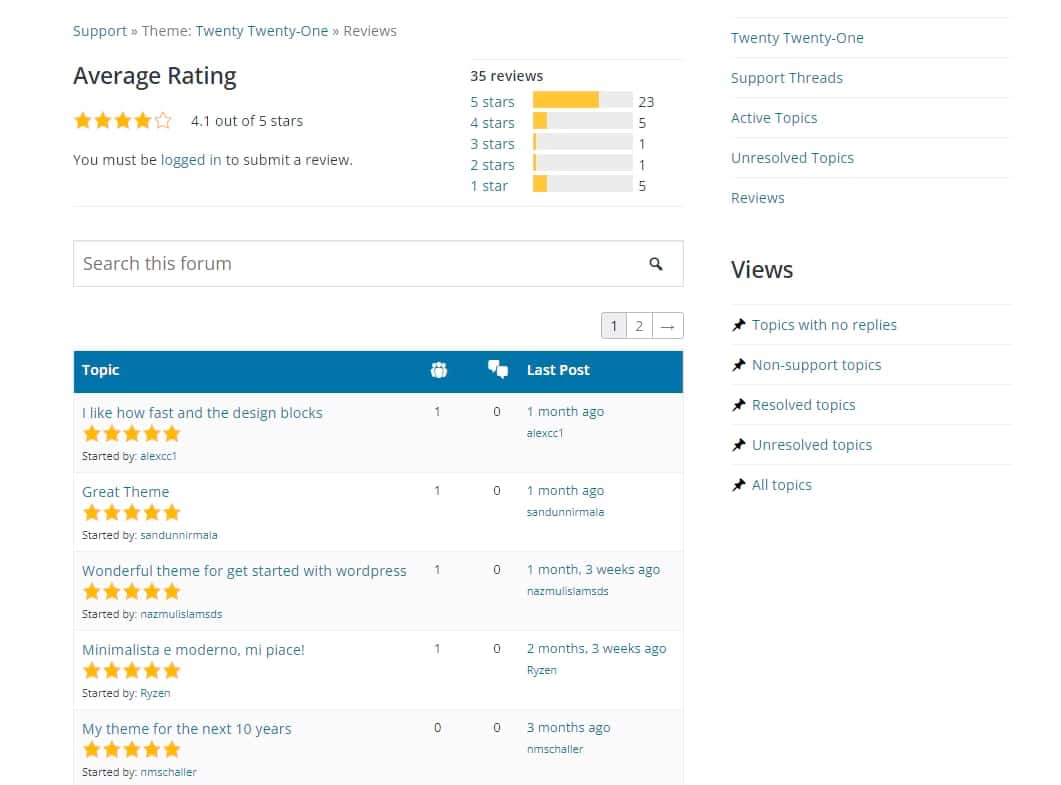
For a more balanced look at the theme, please pay attention to three and four-star reviews as users are more likely to give a reasonable explanation of what they liked and disliked. And of course, two-star and one-star reviews could give you an idea of what isn’t so great.
You can also search for third-party reviews that can go in-depth, but look out for people using affiliate links and find an unbiased source that tried out the theme.
These won’t help you know what it’s like to use it long-term, but they should at least give you an idea of how appealing the design is and how easy it is to work with.
7. SEO-Optimized
It’s always a good idea to pick an SEO-optimized theme, but it can be hard to tell at a glance whether it fits this criterion. Most SEO optimization goes on under the hood and has to do with the underlying structure of the page.
While every theme will say that it’s SEO-optimized, not all of them are. Unless you’re versed in HTML5, you might not know how to tell if it’s genuinely made well.
Still, SEO-friendly themes generally have small sizes (fast speeds), responsive design, and good HTML structuring.
Look for tells like improperly nested headings/multiple H1 headings, confusing navigation menus, and messy HTML code to know that a page’s structure is poor.
Remember that most SEO optimization involves creating high-quality content, so it is primarily on you.
8. Secure
Much like with SEO, every theme will say it’s safe and secure, but there’s no way to test this claim without being familiar with code. And unlike SEO, there are no easy tells of a poorly secured theme without digging through the source code.
You can use a tool like a Theme Check(er) plugin or an online scanner like Sucuri SiteCheck. These are most effective when tested on your site.

There’s no need to be alarmed if there are just a few issues, as it’d be impossible to code a theme that threw no warnings at all, and not all are the theme’s fault. But if you’re seeing several prominent notices pop up, it may be time to switch.
There’s also the issue of themes themselves coming bundled with malware. To avoid this, stick with reputable vendors like the official WordPress theme repository or popular third-party ones like TemplateMonster or ThemeForest. Don’t install software from unknown sites without much research, and avoid pirated/nulled themes.
9. Translation Ready
If you plan on translating your site and making it available to people worldwide, it’s imperative to pick a theme that lists itself as “translation ready.”
Such themes have the files in place to let you reference your translation files and swap out text on the page as needed, as well as working with RTL languages and non-Latin alphabets. That might sound simple, but it’d be an absolute nightmare to set up on your own.
Even if you don’t plan on translating your site right now, you never know if down the line you’ll end up with several hundred thousand visitors and might want to start thinking of localizing your content and bringing in international visitors.
Instead of having to switch to a new theme or pay a developer to get it translation-ready, pick one that’s already done the work for you.
WordPress Themes to Avoid
You now know what to look for in a theme, but what are the things you want to avoid? Even popular themes like Avada, the top-selling theme on ThemeForest, aren’t exempt from bloat.
While themes that fit these criteria aren’t always strictly bad, you should be careful if the one you’re considering is too large, has an unnecessarily massive feature list, or one of these other issues.
1. Bloated
Theme bloat is a severe problem for you and your visitors. A theme packed to the brim with features isn’t likely to be very user-friendly, and these will massively inflate its size.
A poorly optimized theme can single-handedly ruin your website speeds. All those features may sound great on paper, but a gigantic theme packed with stuff you’ll never use will affect your performance.
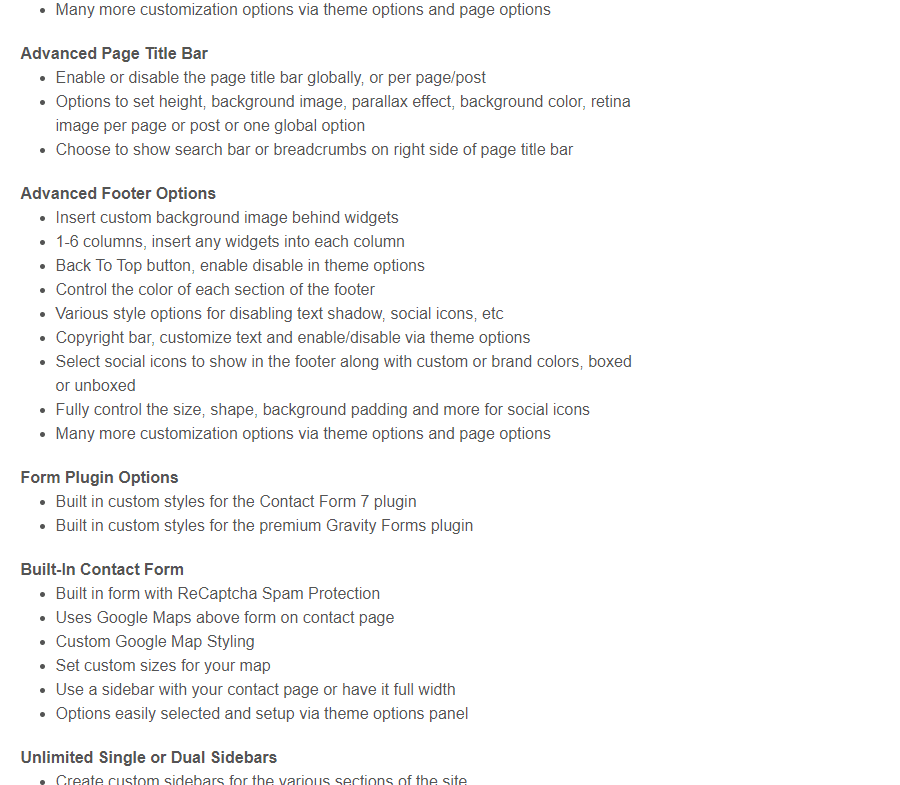
As already mentioned, lightweight themes can be below 1MB, while it’s rare for a well-optimized one to go far over 2-3MBs. Mega themes and “toolkits” like Avada can clock out at over 8MBs and counting, so large that some web hosts won’t even let you upload them directly.
The WordPress core, with all its functionality, is just over 8MBs. Think about just how much clutter must be stuffed into what’s intended to be a simple aesthetic template for it to match or exceed the size of WordPress itself.
That’s why you should pick well-optimized themes that do their job and leave the actual functionality to plugins.
2. Too Many Options
A common sight when you visit a theme description is a massive list of features that seem to go on and on. But this is a good thing, right? Why purchase something simple when you can get all of these features for the same price?
The truth is, those endless feature lists with dozens of premade templates and hundreds of bundled plugins are a sign of a bloated theme that will more than likely slow your site to a crawl.
These so-called “multipurpose” themes have too many problems to list.
You’ll never use all of these several hundred tiny features, but they’re still there, bloating the file size and slowing down your site. Plus, more features equal more potential security holes. That’s why you should use a lightweight theme and only install the plugins you need!
Themes like Avada, which come with features like a custom-made website and form builder, lead to an issue known as “theme lock-in.” It may seem like a good idea to skip paying for plugins, but when you eventually try to switch to a new theme, you’ll find that your site is completely broken and filled with strange layout issues and ugly shortcodes.
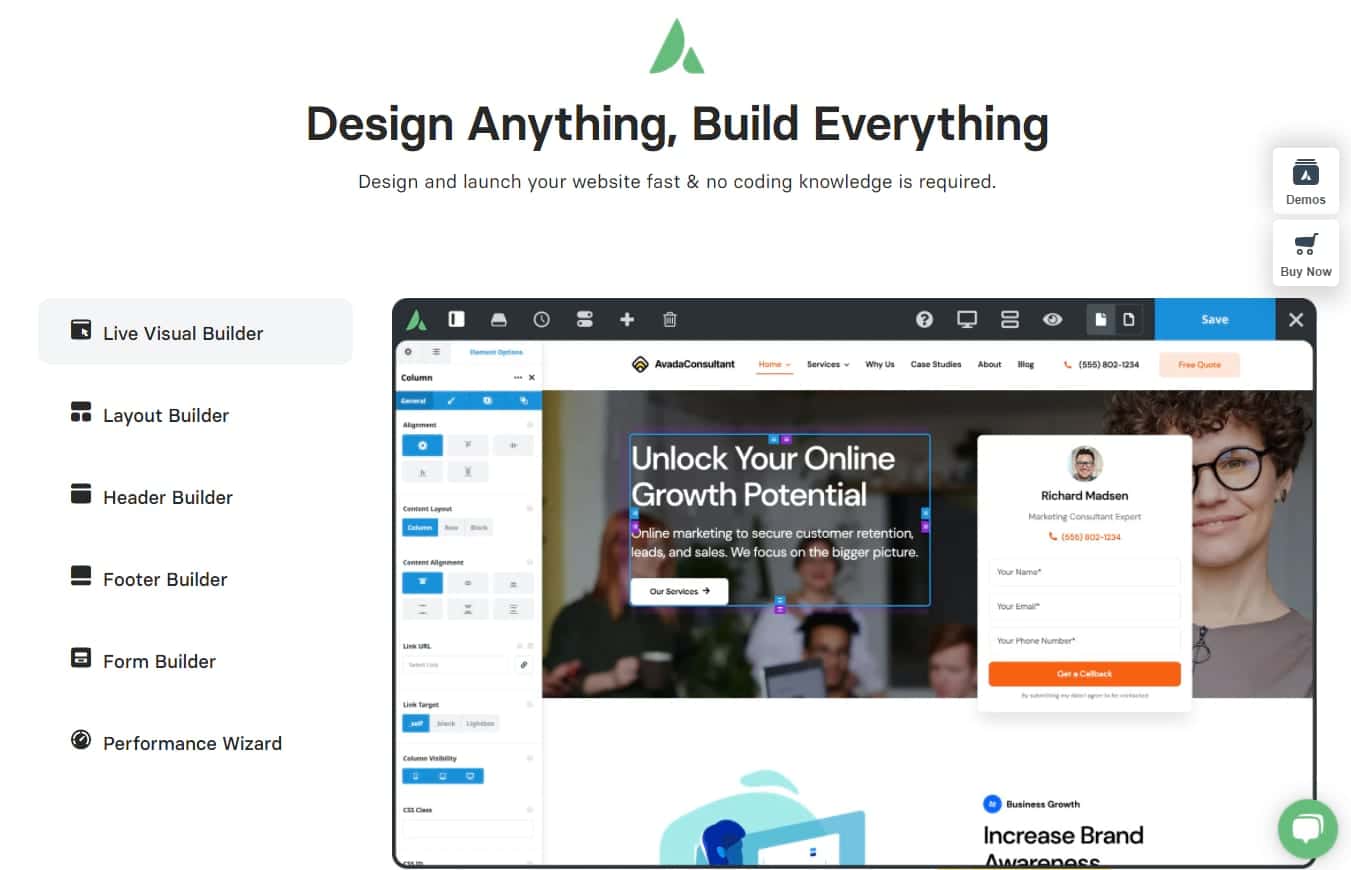
That’s why you should avoid themes that come with custom post types, shortcodes, or any significant functionality like contact forms or builders and use a plugin instead.
Finally, premade templates are also not always a good thing. They bloat the price and the theme size, and are generally useless unless you’re throwing together a site in 24 hours and don’t plan to replace any of the demo images or content.
A few templates with different layouts can be pretty helpful, but a hundred demos for every possible niche are excessive and unnecessary.
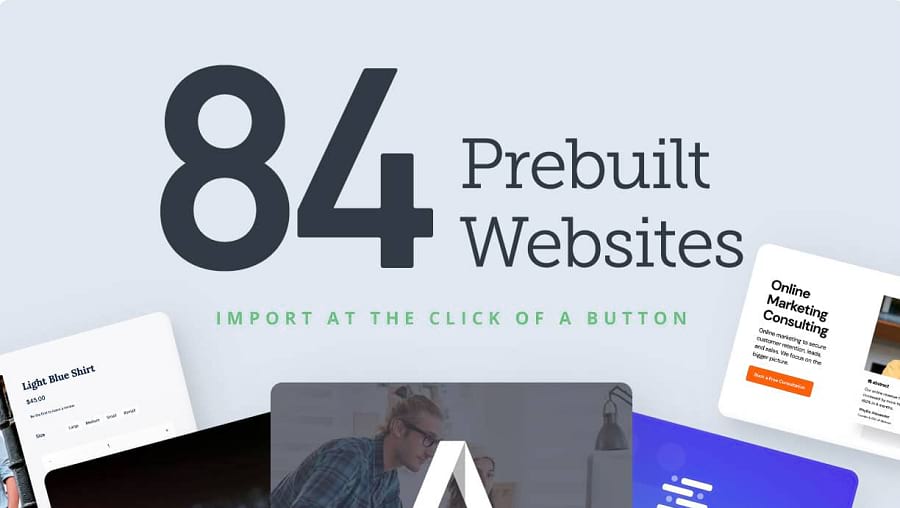
Avada sells itself on having 550+ pages of documentation, but for a tool meant to provide a simple design base for your site, that seems like way too much.
If you need the functionality, it’s far better to rely on plugins that can easily be turned off than to hook them into your website’s most crucial back-end support that will be extremely difficult to swap out later.
3. Inactive Support
Inactive support is never a good sign. Whether you need help installing a theme or fixing a bug that suddenly crops up, it’s always good to have the official developers to turn to. And if there’s no support, that’s a good sign that it isn’t being updated anymore.
If you’re using a theme from the WordPress repository, it’s effortless to see if it’s being supported by visiting its page, scrolling down, and viewing the support forum. Topics with a checkmark have been resolved, so it’s likely not supported well if you don’t see any checks.
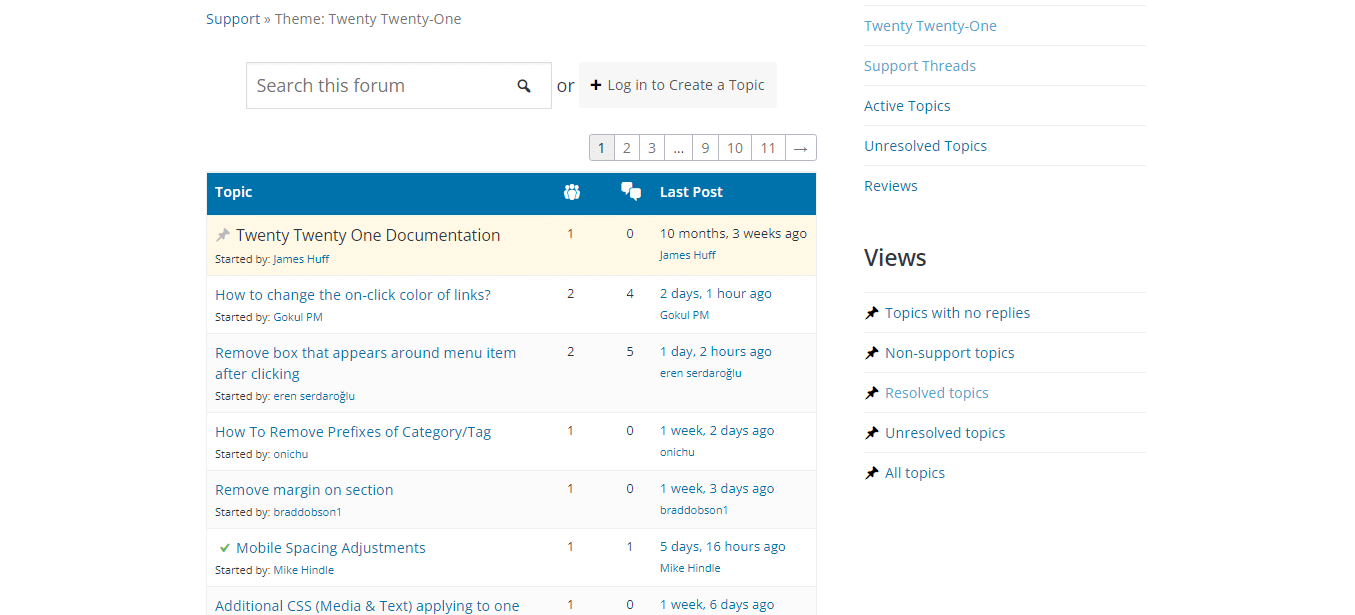
Unfortunately, support on third-party sites is often less transparent. Themes may have support forums where you can manually check to see if topics are getting resolved, but it’s a lot harder to see if support is currently active.
4. Inaccessible
Finally, it’s crucial to avoid themes that aren’t built with accessibility in mind. This will cause problems for assistive device users and be time-consuming to fix by yourself, even if you’re familiar with code.
Themes may say they’re accessible, but make sure they list specific steps they’ve taken. This may include screen reader optimization, keyboard shortcuts, or special features like Twenty Twenty One’s contrast color picker.

Before installing, check if it’s accessible yourself or run the demo through an automated accessibility checker.
Summary
Slow, bloated themes are a big problem in WordPress. It’s an issue that can cost you heavily, making it extremely difficult to move away from the theme in the future without breaking your site.
Avoid themes with massive feature lists and instead stick with simple, lightweight ones that come with just the essentials. There are plenty of themes out there that are functional and beautiful without bogging themselves down with a hundred unnecessary features.
Look for themes that are simple, responsive, SEO-optimized, secure, and regularly updated. Avoid heavy and bloated ones with way more features than you’re ever likely to use.
Are you having trouble choosing the right theme for your new project? Please share your requirements with our community in the comments below!


